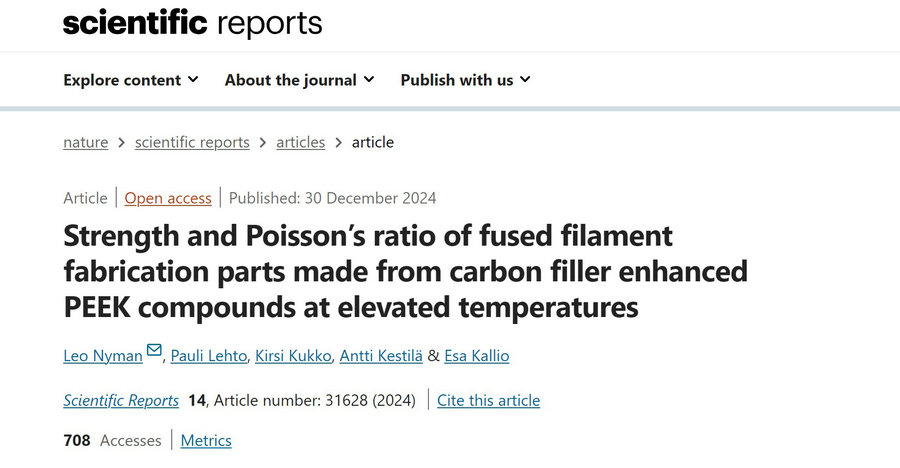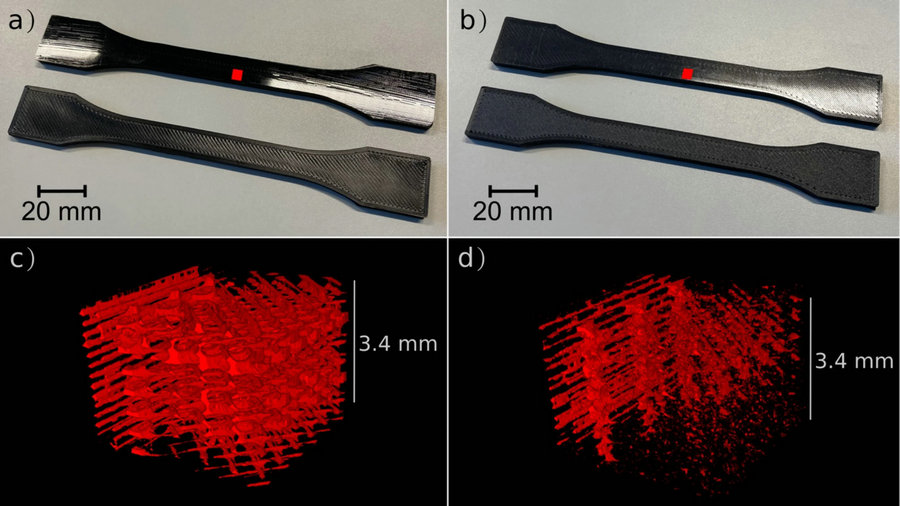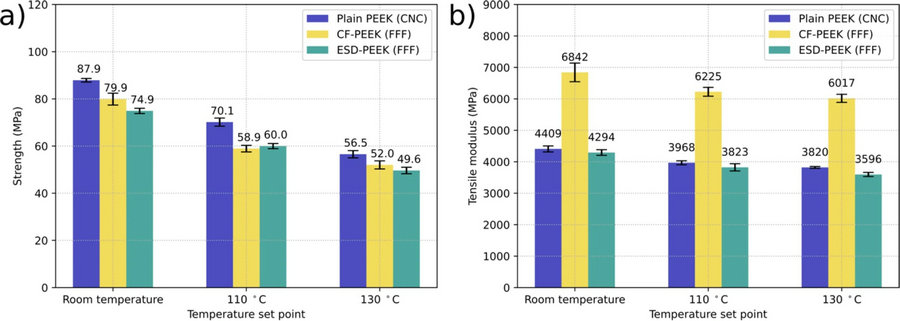PEEK (Polyether Ether Ketone), as a high-performance engineering plastic, has gained prominence in aerospace and medical fields due to its excellent mechanical properties, heat resistance, and chemical stability. However, achieving flexible manufacturing through 3D printing while maintaining its superior performance in high-temperature environments remains a key industry challenge.
At the end of 2024, a study published in Scientific Reports offers new insights into this issue.

Key Findings:
Systematic Study of 3D Printed Carbon-Based Reinforced PEEK Materials:
A research team from the Finnish Meteorological Institute and Aalto University investigated the high-temperature performance of carbon fiber (CF) and carbon nanotube (CNT) reinforced PEEK using Fused Filament Fabrication (FFF). The study focused on two critical temperatures, 110°C and 130°C, essential for aerospace applications.
This careful temperature selection reflects a deep understanding of real-world aerospace conditions, providing clear safety boundaries for engineering designs. PEEK's glass transition temperature (Tg) is approximately 143°C. Engineering practices reserve a safety margin of 30°C below Tg, making 110°C the first test temperature.The second test temperature, 130°C, corresponds to 80% of PEEK's heat deflection temperature, beyond which rapid softening occurs.
Why 110°C and 130°C?
1, PEEK's glass transition temperature (Tg) is approximately 143°C. Engineering practices reserve a safety margin of 30°C below Tg, making 110°C the first test temperature.
2, The second test temperature, 130°C, corresponds to 80% of PEEK's heat deflection temperature, beyond which rapid softening occurs.
This careful temperature selection reflects a deep understanding of real-world aerospace conditions, providing clear safety boundaries for engineering designs.

Key Innovations:
1, Systematic high-temperature mechanical testing of 3D-printed carbon-based reinforced PEEK materials.
2, Advanced X-ray computed tomography (CT) provided high-resolution 3D images of the internal structure, revealing performance differences between ESD-PEEK and CF-PEEK samples.
3, The study delivered critical data for designing aerospace-grade plastic components, showcasing CF-PEEK's outstanding specific strength at 130°C, essential for lightweight structural design.

Rigorous Testing Methods:
The team used an MTS Systems 651 temperature-controlled tensile testing chamber for precise high-temperature performance evaluations. Materials tested included ESD-PEEK (CNT-reinforced), CF-PEEK (short carbon fiber-reinforced), and pure PEEK under identical conditions at room temperature, 110°C, and 130°C.
Results:
1, At room temperature, pure PEEK exhibited the highest tensile strength (87.9 MPa), while CF-PEEK and ESD-PEEK showed slightly lower values (78.9 MPa and 74.9 MPa, respectively).
2, At 130°C, all materials saw a strength reduction of 34–36%, but CF-PEEK demonstrated the highest specific strength due to its low density.

ARKPEEK's Conclusion:
The study confirms that carbon fiber-reinforced PEEK retains excellent mechanical properties even at 130°C, offering new solutions for material selection in spacecraft structural components under extreme conditions.
Future Directions:
1, Improving the crystallinity of the matrix material while maintaining carbon fiber reinforcement.
2, Addressing porosity issues, particularly the 8.3% porosity observed in ESD-PEEK.
3, Exploring fatigue, creep resistance, and stability in vacuum ultraviolet environments.
These advancements in carbon-based reinforced PEEK will not only propel aerospace technology forward but also unlock new possibilities for space exploration. Let this research inspire further innovation in the field.